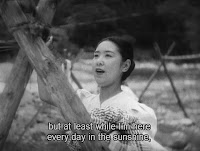Their name (fascinating in itself) speaks of ancient Greek culture and mythology. The Aeolians were people who settled in central Greece around 1100 B.C.E. Aeolus was the god of the winds, his name derived from the Greek aiolos, meaning "quick-moving." Although the winds in ancient Greece may have moved quickly, the image evoked by Aeolian harps has usually been that of peace and sensitivity.
Although Aeolian harps (sometimes called "wind harps") are ancient, they captured the imagination of many Western poets, particularly the Romantic poets in the late 18th and early 19th centuries, who had a love for Nature. Ralph Waldo Emerson hung an Aeolian harp in his open window. They were drawn upon as a metaphor by William Wordsworth, Percy Bysshe Shelley, Henry David Thoreau, and Thomas Hardy. Most famously, Samuel Taylor Coleridge wrote a poem titled "The Eolian Harp."
In that poem, Coleridge addressed an ongoing concern of himself and other poets of the Romantic era. Namely, in an age in which more and more knowledge and control of Nature has resulted from science's treating Nature as inanimate objects that can be manipulated, how do we restore a more intuitive way in which Nature can touch our souls? Similarly, in an age in which God is getting shoved back to the beginning of time as the Maker of natural laws that seem to allow the world to operate mechanically, how can we again come to sense the Divine as immediately present in the natural world?
 Here is where the Aeolian-harp metaphor of resonance with Nature's breezes came to be useful. What if we could tune our hearts and imaginations to resonate to the beautiful subtleties within Nature? And what if we could perceive a Living Spirit present behind all life? Coleridge daringly asked a similar question in his poem: "And what if all of animated nature / Be but organic Harps diversely framed, / That tremble into thought, as o'er them sweeps ...one intellectual breeze, ...the Soul of each, and God of all?"
Here is where the Aeolian-harp metaphor of resonance with Nature's breezes came to be useful. What if we could tune our hearts and imaginations to resonate to the beautiful subtleties within Nature? And what if we could perceive a Living Spirit present behind all life? Coleridge daringly asked a similar question in his poem: "And what if all of animated nature / Be but organic Harps diversely framed, / That tremble into thought, as o'er them sweeps ...one intellectual breeze, ...the Soul of each, and God of all?"These efforts to restore a harmony in our sensibility towards Nature were also efforts to restore a split within our human selves. That idea was expressed in a poem by Alfred, Lord Tennyson, in which he also expressed a role for reverence:
"Let knowledge grow from more to more,
But more of reverence in us dwell;
That mind and soul, according well,
May make one music as before."
~~~
(The Coleridge lines are from "The Eolian Harp" [1796], lines 44-48.)
(The Tennyson quatrain is from "In Memoriam" [1850], Prologue, stanza 7.)


